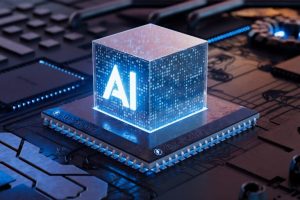
In the world of artificial intelligence, much of the spotlight has been focused on the training of massive models like GPT-4, Gemini, and others. These models require vast computational resources and months of training on specialized hardware. Yet, for all the attention paid to training, the most pressing challenge in AI today lies elsewhere: inference.
Inference—the process of using a trained model to generate predictions or outputs—is where the rubber meets the road. Inference is an operational cost that scales linearly with every request and when it comes to deploying AI at the edge the challenge of inference becomes more pronounced.
Edge AI introduces a unique set of constraints: limited computational resources, strict power budgets, and real-time latency requirements. Solving these challenges demands a rethinking of how we design models, optimize hardware, and architect systems. The future of AI depends on our ability to master inference at the edge.
The Computational Cost of Inference
At its core, inference is the process of taking an input—be it an image, a piece of text, or a sensor reading—and running it through a trained AI model to produce an output. The computational cost of inference is shaped by three key factors:
Model Size: The number of parameters and activations in a model directly impacts memory bandwidth and compute requirements. Larger models, like GPT-4, require more memory and processing power, making them ill-suited for edge deployment.
Compute Intensity: The number of floating-point operations (FLOPs) required per inference step determines how much computational power is needed. Transformer-based models, for example, involve multiple matrix multiplications and activation functions, leading to billions of FLOPs per inference.
Memory Access: The efficiency of data movement between storage, RAM, and compute cores is critical. Inefficient memory access can bottleneck performance, especially on edge devices with limited memory bandwidth.
 At the edge, these constraints are magnified:
At the edge, these constraints are magnified:
Memory Bandwidth: Edge devices rely on low-power memory technologies like LPDDR or SRAM, which lack the high-throughput memory buses found in cloud GPUs. This limits the speed at which data can be moved and processed.
Power Efficiency: While cloud GPUs operate at hundreds of watts, edge devices must function within milliwatt budgets. This necessitates a radical rethinking of how compute resources are utilized.
Latency Requirements: Applications like autonomous driving, industrial automation, and augmented reality demand responses in milliseconds. Cloud-based inference, with its inherent network latency, is often impractical for these use cases.
Techniques for Efficient Inference at the Edge
Optimizing inference for the edge requires a combination of hardware and algorithmic innovations. Below, we explore some of the most promising approaches:
Model Compression and Quantization
One of the most direct ways to reduce inference costs is to shrink the model itself. Techniques like quantization, pruning, and knowledge distillation can significantly cut memory and compute overhead while preserving accuracy.
Hardware Acceleration: From General-Purpose to Domain-Specific Compute
Traditional CPUs and even GPUs are inefficient for edge inference. Instead, specialized accelerators like Apple’s Neural Engine and Google’s Edge TPU are optimized for tensor operations, enabling real-time on-device AI.
Architectural Optimizations: Transformer Alternatives for Edge AI
Transformers have become the dominant AI architecture, but their quadratic complexity in attention mechanisms makes them expensive for inference. Alternatives like linearized attention, mixture-of-experts (MoE), and RNN hybrids are being explored to reduce compute overhead.
Distributed and Federated Inference
In many edge applications, inference does not have to happen on a single device. Instead, workloads can be split across edge servers, nearby devices, or even hybrid cloud-edge architectures. Techniques like split inference, federated learning, and neural caching can reduce latency and power demands while preserving privacy.
The Future of Edge Inference: Where Do We Go from Here?
Inference at the edge is a system-level challenge that requires co-design across the entire AI stack. As AI becomes embedded in everything, solving inference efficiency will be the key to unlocking AI’s full potential beyond the cloud.
 The most promising directions for the future include:
The most promising directions for the future include:
Better Compiler and Runtime Optimizations: Compilers like TensorFlow Lite, TVM, and MLIR are evolving to optimize AI models for edge hardware, dynamically tuning execution for performance and power.
New Memory and Storage Architectures: Emerging technologies like RRAM and MRAM could reduce energy costs for frequent inference workloads.
Self-Adaptive AI Models: Models that dynamically adjust their size, precision, or compute path based on available resources could bring near-cloud AI performance to the edge.
Conclusion: The Defining AI Challenge of the Next Decade
Inference is the unsung hero of AI—the quiet, continuous process that makes AI useful in the real world. The companies and technologies that solve this problem will shape the next wave of computing, enabling AI to move beyond the cloud and into the fabric of our daily lives.
 About the Author
About the Author
Deepak Sharma is Vice President and Strategic Business Unit Head for the Technology Industry at Cognizant. In this role, Deepak leads all facets of the business — spanning client relationships, people, and financial performance — across key industry segments, including Semiconductors, OEMs, Software, Platforms, Information Services, and Education. He collaborates with C-suite executives of top global organizations, guiding their digital transformation to enhance competitiveness, drive growth, and create sustainable value.

